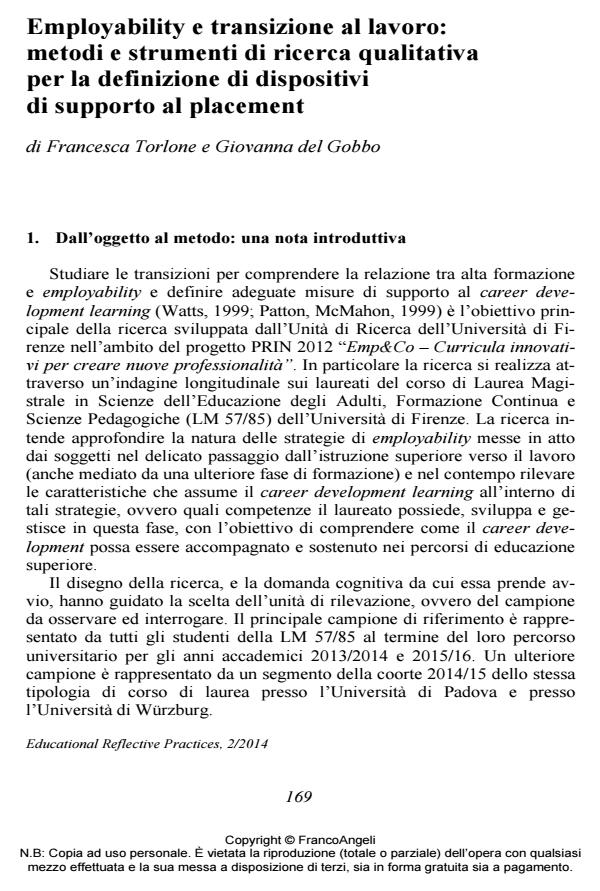Employability e transizione al lavoro: metodi e strumenti di ricerca qualitativa per la definizione di dispositivi di supporto al placement
Titolo Rivista EDUCATIONAL REFLECTIVE PRACTICES
Autori/Curatori Giovanna del Gobbo, Francesca Torlone
Anno di pubblicazione 2015 Fascicolo 2014/2
Lingua Inglese Numero pagine 22 P. 169-190 Dimensione file 143 KB
DOI 10.3280/ERP2014-002011
Il DOI è il codice a barre della proprietà intellettuale: per saperne di più
clicca qui
Qui sotto puoi vedere in anteprima la prima pagina di questo articolo.
Se questo articolo ti interessa, lo puoi acquistare (e scaricare in formato pdf) seguendo le facili indicazioni per acquistare il download credit. Acquista Download Credits per scaricare questo Articolo in formato PDF

FrancoAngeli è membro della Publishers International Linking Association, Inc (PILA)associazione indipendente e non profit per facilitare (attraverso i servizi tecnologici implementati da CrossRef.org) l’accesso degli studiosi ai contenuti digitali nelle pubblicazioni professionali e scientifiche
In the ongoing downturn the role of higher education is much more important than in the past and higher education is required to enhance students’ employability. It responds to policy goals related to the development of the country’s human capital and to students’ motivations in entering higher education. The article focuses on how university job placement services can help students to enhance their employability and their sustainable employability (this latter one being much more important in a long-term career development perspective). One way to enhance the institution’s contribution to university students’ employability is to strengthen and better structure job placement services directly within curriculum of degree courses. The contribute presents a reflection about the factors considered predictive of placement (with a particular focus on soft skills and employers’ perspective), that is possible to strengthen through consistent and proper devices, with specific reference to guidance/vocational talk during the first and second phase of transition to work. On the base of literature and best practices, the contribution wish define an experimental protocol, with attention to applicability and sustainability into Italian university system and in line with quality assurance in Bologna Process. Target are graduates of master’s degree courses in pedagogy and adult education
Giovanna del Gobbo, Francesca Torlone, Employability e transizione al lavoro: metodi e strumenti di ricerca qualitativa per la definizione di dispositivi di supporto al placement in "EDUCATIONAL REFLECTIVE PRACTICES" 2/2014, pp 169-190, DOI: 10.3280/ERP2014-002011